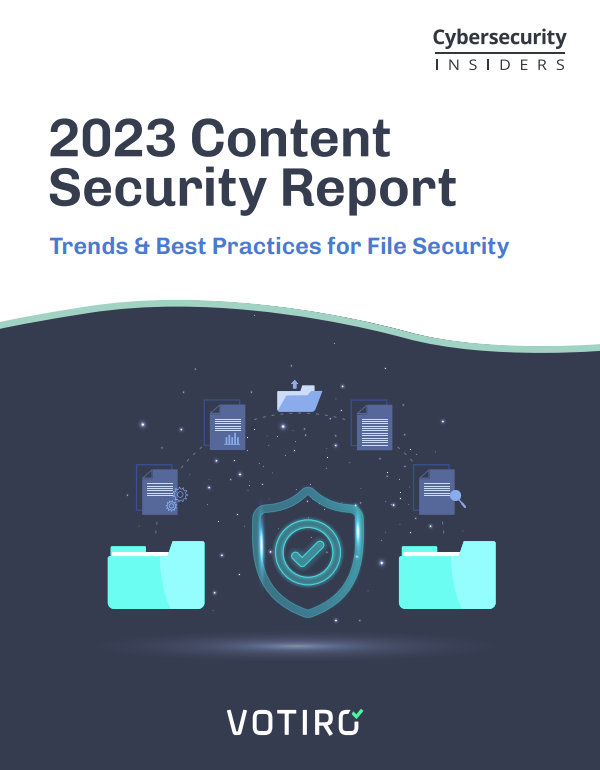Content security is a critical concern in today’s digital ecosystem, as a growing majority of devastating attacks originate from file-borne threats. We share and receive more content and file formats than ever – through emails, web browsers, cloud apps, and direct transfers – thereby significantly increasing the risk of attacks that utilize weaponized files.
As the attack surface expands and threat actors devise more sophisticated methods to infiltrate organizations, traditional signature-based file security methods prove increasingly inadequate. The dramatic rise in breaches involving malicious files shows that innovative security technologies, such as Content Disarm & Reconstruction (CDR), are essential to address these evolving threats more effectively.
The 2023 Content Security Report, Trends & Best Practices for File Security, provides a deep dive into today’s file security landscape and reveals the latest file attack tactics, primary points of entry and their vulnerabilities, and the measures necessary to tackle file-borne threats.
Key findings include:
• Entry Points and Vulnerabilities: Files predominantly enter organizations via email (74%), content collaboration and cloud storage (52%), and web downloads to endpoints (50%). Those channels are also recognized as the most vulnerable to file-borne threats.
• Visibility Concerns: Over a third of organizations (36%) lack comprehensive visibility into the channels through which files enter. This not only amplifies the risk of undetected threats entering organizations but also negatively affects compliance with regulations governing the handling of sensitive information.
• File-Borne Security Incidents: A significant 38% of respondents confirmed their organizations experienced a security incident originating from a malicious file. Another 33% believe this possibly occurred in their organizations. This combined 71% of confirmed and suspected incidents is
alarmingly high and signals that current file security measures are largely insufficient.
• Defensive Measures: When it comes to countering file-borne threats, 78% rely on antivirus and endpoint security. However, more advanced measures like Content Disarm & Reconstruction are employed by only 33%, suggesting there’s room for the adoption of more evolved defenses.
We would like to extend our gratitude to Votiro for their invaluable contribution to this survey. We hope the insights and best practices presented in this report will provide a comprehensive guide for organizations looking to strengthen their content security posture.















